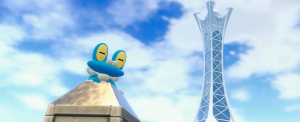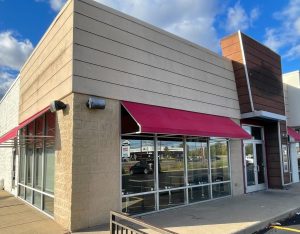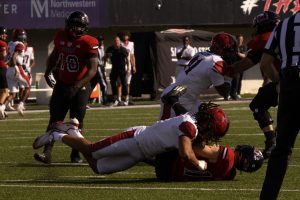Groups plan to improve bus service
October 8, 1987
Members of the Huskie Busline and the Student Association Mass Transit Board will be working together this semester to improve the quality of service on several routes, including routes 3 and 4.
One problem is the amount of time scheduled for each route. Currently, each route runs on a 15-minute schedule. Although this schedule is usually enough time to complete an entire run, during heavy traffic hours (before and after classes, evening rush hour) and in bad weather the buses sometimes fall behind.
If the drivers fall too far behind schedule, some drivers must skip a run and wait at the Holmes Student Center until they can get back on schedule, Paul Johnson, street operations manager for the Huskie Busline, said at a SAMTB meeting.
Johnson said the problem might be solved by extending the time schedule to 20 minutes. The SAMTB is currently looking into the feasiblity of this solution.
“As the system is now, if the buses double up, we are not operating as efficiently as we could,” Johnson said.
The Huskie line will survey the routes and submit a report to the SAMTB later this semester. The SAMTB will be revisiting the issue several times this semester.
Service for the next semester also was discussed at the meeting, including starting dates. The buses will run on a weekend schedule beginning Jan. 16 through 18. The buses will switch to its normal route beginning Jan. 19.
Also discussed at the meeting was a discounted bus pass, which will be offered starting Nov. 1. Customers will be able to purchase a semester bus pass for $18.
At the next meeting, to be held Oct. 12, the SAMTB will discuss plans for the fiscal year 1988 budget. Issues which might influence the decisions include complaints about the lack of service to the College of Engineering in Sycamore, the increased cost of operating handicapped services to NIU students and the anticipated decline in enrollment for next year.
Phil Kessler, services adviser and chairman for the SAMTB said increasing service to the College of Engineering only would be possible if the college were to pay for it. Currently, the SAMTB pays for two routes and the engineering college pays for four.
“The MTB won’t pay more (money) for the engineering shuttle,” Kessler said. “It all boils down to money. The board is already paying part (of the cost of the engineering shuttle). Whatever comes out of the committee (engineering subcommittee) will have to be creative and be subsidized by the College of Engineering,” he said.
Services for the handicapped is another issue which might result in an increase in student bus fees. Originally, the SAMTB estimated about $36,000 as operating costs for a paratransit van. However, Hermsen said that estimate was too low and more money might have to be appropriated.
Another issue members of the SAMTB must consider is the enrollment figures. If enrollment declines, the SAMTB might have to raise its fees just to keep the budget even, said Mary Hermsen, busing graduate adviser.






